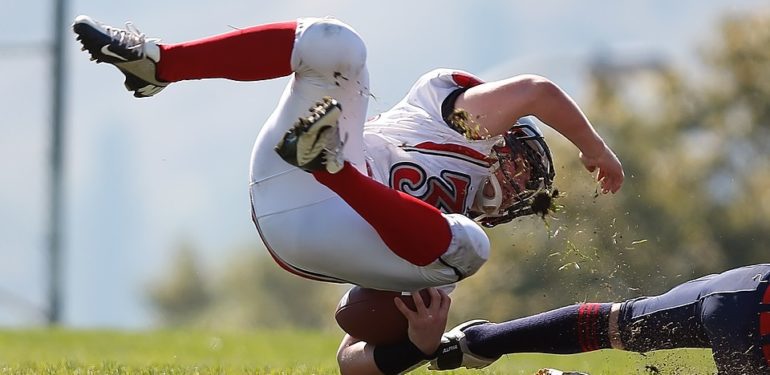For many, football is life but, with increasing concern about the long-term effects of playing the game, is the impact on a life worth a way of life?
Photo Credit.
In recent years the effects of repeated concussion have become a cause of controversy and concern in many quarters. Will Smith’s film, Concussion (2015), told the story of Dr Bennet Omalu – a doctor who set out to increase awareness of chronic encephalopathy (CTE), a neurodegenerative disease caused by repeated head injuries (such as impacts during a game of football). CTE symptoms include:
- Behavioural abnormalities
- Mood swings
- Cognitive impairment
The above symptoms typically don’t appear until years after the injuries occurred and generally worsen over time, potentially resulting in dementia.
Dr Omalu himself was quite clear about his feelings (and research) when it came to children partaking in the sport. In 2015, he wrote in a New York Times editorial:
“If a child who plays football is subjected to advanced radiological and neurocognitive studies during the season and several months after the season, there can be evidence of brain damage at the cellular level of brain functioning, even if there were no documented concussions or reported symptoms. If that child continues to play over many seasons, these cellular injuries accumulate to cause irreversible brain damage, which we know now by the name chronic traumatic encephalopathy…”
However, other physicians believe that, while there is a risk associated with any contact sport, children and young adults can safely engage in full tackling providing they are properly supervised, fully competent before progressing to full contact and suitably protected with properly-fitting helmets and pads.
Proper supervision doesn’t relate only to the football field. It’s important that parents take steps to familiarise themselves with injury symptoms, such as those of a concussion headache, in order to ensure early treatment can be sought and optimal recovery achieved. Such steps can go a long way to ensuring a fast recovery and positive, long-term outcome.
Numerous organizations and their coaches now encourage and teach what is known as “heads up tackling”. This approach to tackling encourages players to keep their head and eyes up when engaging in a tackle and therefore use the front of their shoulder as the point of contact, which in turn helps to avoid or minimize direct impacts to the head. This method, along with USA Football’s “Heads Up Football Key Components”, which include: concussion recognition and response; heat preparedness and hydration; proper equipment fitting; and training relating to sudden cardiac arrest, can go a long way to players engaging in contact football with reduced risk.
Ultimately, it’s up to a parent or guardian to make a decision about whether the risks of taking part in contact football outweigh the rewards of a child playing a team sport that can:
- Develop self-esteem
- Normalize regular exercise
- Teach leadership skills
- Teach teamwork
- Strengthen relationships
- Develop communication skills
- Teach respect
- Develop time management
It seems that many think that the rewards outweigh the risk, just don’t neglect preparation.


